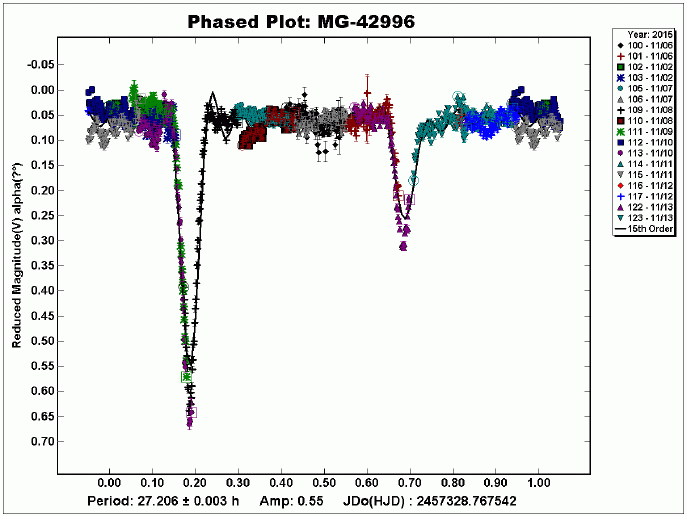|
|
Research
Although SSC Observatories sometimes takes impressive images during their operation, our
observatories are optimized to do scientific research that large observatories are not designed to do today.
Large observatory instruments can look far into the past and detect both small and faint objects. The are
optimized to perform tasks like high resolution spectroscopy or rapid all sky surveys. They are a VERY expensive and
scarce resource. There is fierce competition to get use of them.

By robotically operating many small (<1 meter in diameter) telescopes, SSC Observatories
can cost effectively dedicate instruments to staring at single targets for many nights at a time. It is a guns verses number game.
Large observatory telescopes are great at surveying large swaths of sky or focusing small and deep, but they are too costly to
be applied to measuring how light from a distant object varies over intermediate time scales or to be quickly re-tasked to modest targets
of opportunity. Our research projects are designed to
fill that niche. Our current research includes:
-
Discovering and characterizing new variable stars.
-
Monitoring stars in outburst (novae, cataclismic, super novi).
-
Measuring asteroid rotation rates.
-
Modeling asteroid shapes.
-
Tracking asteroid posotions (astrometry).
-
Following up on and confirming exoplanet transits.
-
Rapidly following up micro lensing events when opportunities arise.
-
Measuring meteor flux rates and radiants.
-
Searching for Radio Transients with astronomical origins.
-
Developing free or open source systems for autonomous data aquisition.
-
Developing free or open source systems for auatomated data analysis and reporting
-
Exploring the use of consumer cameras and other equipment in cost effective pursuit of SSCO's research goals.
Current Research Projects
Photometric Determination of Asteroid Rotational Periods and Shapes
Asteroid Astrometry
Variable Star Photometry and Spectroscopy
Development of Technology for Automated Astronomical Observation
Automated Astronomical Data Processing
Confirming Motess-GNAT Candidate Variable Stars
Radio Astronomy
Astrometry of Bright Double and High Proper Motion Star
Past Projects
Short Period Variable Stars
Animations of Comet Linear 2000WM1
Lunar Occultation of Saturn 9/10/2001
Timelapse Animations of the November 8, 2006 Transit of Mercury
Time Lapse Animation Of The 2007 Perseids Meteor Shower
3D Color Magnitude Diagrams of Globular and Open Clusters
Ground Based Determination of Meteor Trajectories and Satellite Orbits
Genesis Spacecraft Optical Re-entry Tracking
CCD Time Lapse Animation Technique
N-Body Problem Simulation
Geodesy
Selective Image Reconstruction Techniques
CCD Color Imaging Techniques
Creating The SSC Observatoris Messier Atlas
Photometry of Short Period Eclipsing Binary Stars
Images and Animations Of The 2017 Total Solar Eclipse
Images and Animations Of The 2024 Total Solar Eclipse
Time Lapse Animation of 2014 Lunar Eclipse
Imaging With Uncooled Sensors
High Speed Lightning Photography
|

